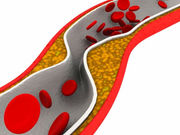In patients with intraprocedural stent thrombosis during percutaneous coronary intervention
MONDAY, March 7, 2016 (HealthDay News) — Multiple plaque ruptures with larger cavities are seen more often in patients with intraprocedural stent thrombosis (IPST) during percutaneous coronary intervention, according to a study published in the March 15 issue of The American Journal of Cardiology.
Toru Morofuji, M.D., from Kitaishikai Hospital in Ozu, Japan, and colleagues used intravascular ultrasound (IVUS) to examine lesion characteristics in patients with IPST. They analyzed 1,504 consecutive stent-implanted lesions in 1,324 patients. Of these, IPST occurred in five patients during percutaneous coronary intervention. The IVUS characteristics of plaques that developed IPST were compared with those of 15 control plaques, without evidence of IPST.
The researchers found that all lesions that led to IPST had ruptured plaques with evidence of positive remodeling and attenuation. Plaque rupture was seen in 40 percent of plaques in the non-IPST group. The IPST group more often had multiple plaque ruptures in the culprit lesion (80 versus 7 percent; P < 0.01). The IPST group had a larger maximum cavity area compared with the non-IPST group having plaque rupture (4.6 versus 2.4 mm²; P < 0.01).
“In conclusion, we found using IVUS that multiple plaque ruptures with larger cavities more often evolved into IPST,” the authors write.
Copyright © 2016 HealthDay. All rights reserved.








